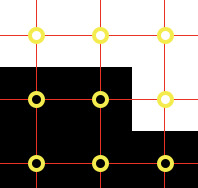#alpha testing
Explore tagged Tumblr posts
Text
sometimes you wake up to find a swarm in your board.
18 notes
·
View notes
Text
Uh, so, I kind of have a problem
Way back in the mists of ancient time (aka last September/October I think), I put out a call for people to do alpha testing of a really early version of the game.
The feedback I got from that was incredibly valuable
... I also made absolutely no note of who helped me and how they wanted to be credited in the game.
So if you tested an alpha version of the game and would like to be credited, pretty please let me know <3 You can reply here or send me an ask!
25 notes
·
View notes
Text
Blizzard wouldn't off a beloved character in a cutscene, surely they learned their lesson from legion

10 notes
·
View notes
Text
they added a thermodynamic neuralink 2 this patch so ur char will react to the water with different quotes. i drove the sub over a thermal vent and my character said "whoa this feels like swimming in hot piss" and then i look at the cabin temperature and its 215F ext / 95F int and then looked up fresh piss body temp n it says 95F wow what a game
3 notes
·
View notes
Text
GAME DEV TUMBLR!!! I AM ASKING FOR YOUR ASSISTANCE!
The link above leads you to an itch.io download page for an early "alpha" version of my final college project, All I Wanted Was A Pack Of Cigs. (AIWWAPOC for short)
I need people to play it and review it using THIS FORM!
I have shared this among my own friend groups and in my college but noone has left me any feedback. THIS FEEDBACK IS CRUCIAL TO GETTING A HIGH GRADE! the game should only take about 20 mins, and the form should take about 10 mins, 15 if you answer it in detail. (please answer it in detail!!!!)
please just take a half hour out of your day to play and give feedback. i really need it!!!
the game in no way reflects a finished state, and i will most likely be uploading the link to the finished game here too, in about 3 weeks or so. the finished game will have custom maps, sprites, and GUI! heres a sneak peek:


thank you!!!
#game dev#game development#turnstyle#beta testing#alpha testing#alpha dev#beta dev#rpgmaker#rpgmaker mv#pixel art
6 notes
·
View notes
Text
Referral contest on pet site?!

Hii! So I got accepted in the alpha for a new pet site called Santae. So far I'm absolutely loving it- I sent an application and the day after, I was in! Though there's a contest going on to get an amazing pet that will stay on accounts even after the alpha but here's the thing. It's a referral contest :')
If I can get just one person to fill out this alpha application form while using my username, Phantaemon, as the referral- I have a chance to win the pet, no matter if the person gets accepted or not!
But if I get 5 people to do that, No matter if they get accepted it seems, I'm guaranteed a pet!
If anyone is willing to help me out on this I'd appreciate it! Though, I'll appreciate it even more if you're actually interested in the site (I don't wanna cheat my way in!)
I have less than a week to get 5 people to refer my username! Reblogs are appreciated.
For anyone that gets in as quick as I did, here's a beginners guide to the site!
Here are some images of the pets you can get, as well as some collectibles! (Note: The Kyree appears to be a kickstarter reward.)

(Note again: The pegasus "Proud" is a minimal, AKA a pet for your pet!)

2 notes
·
View notes
Text
Beta testing is a crucial stage in software testing where the product is made available to a chosen group of external users, called beta testers, prior to its official public release. This phase aims to collect real-world feedback, uncover bugs, and evaluate the software’s performance in typical usage scenarios. It usually comes after internal testing stages, such as unit testing and alpha testing, which verify that the software functions correctly in a controlled setting.
1 note
·
View note
Text
Paw Borough Livestream now !!!
come join me for alpha testing: day one !!
0 notes
Text
hey y'all, I wanted to give a shout-out to this really cool new petsite I've been alpha testing for! They have a ton of potential I think and even in alpha already have 23 pet species on the site, fishing, gathering, and tons of fetch quests. Not to mention areas to explore and lots of cool lore with in character updates basically daily. their kickstarter goes live in 9 days, so if you wanna join the alpha testing phase to get exclusive alpha rewards, you need to apply asap! If you do, my username is Neonsparks. Let them know I referred you ;D
#santae#virtual pet site#pet sites#alpha testing#yes i was bribed to make this post#they're giving out referal gifts to alpha testers who manage to get others to join xD#though i do admit i really like this site so far <3 might apply to be an artist?
1 note
·
View note
Text
Supervive Game!
Ayo, new game just dropped? I've been playing this new game called Supervive and idk if it's just because there is a cute bunny character but this game is epic! You can sign up with my link to get an access key for the alpha if you feel ready to bop 'em and drop 'em! *The key takes about an hour to appear in you email inbox after signing up!
#furry#art#video games#Supervive#battle royale#videogame#gaming#steam#steam games#alpha testing#beta tester#furry art#new game!
0 notes
Text

Alpha Testing Applications Re-Open!
ALPHA TESTER DETAILS
* We're looking for our FINAL group of people from different timezones, interests, play-styles, and expertises to test Santae during our Alpha Testing Phase!! So bring your friends, invite, refer and join us along our journey to Beta and Beyond!
* The cut off date for turning in applications is July 28th, 2024.
REQUIREMENTS
* A minimum age of 13 is required to play Santae!
***CLICK HERE FOR MORE INFO***
REWARDS
Be part of our Alpha Testing community and unlock exclusive rewards including an exclusive forum avatar, a trophy for your profile, alpha tester themed clothing items and will also receive a FREE Beta Access Key when our game moves into the Beta Testing Phase.



Alpha and Beta Testers will also have the ability to create an exclusive pet, the Blepp, which will be unavailable post-launch for a while. We have also added a SECOND exclusive pet which every Alpha Tester will be awarded, the Raylen as a thank you. Enjoy your well-deserved perks!


STAFF APPLICATIONS ARE OPEN
* Positions are currently open, at the moment we are currently searching for Admins, Moderators and Assistants with a strong desire to learn and grow with our dynamic staff team! * To maintain fairness, please refrain from discussing your application status, as all submissions are reviewed anonymously. ~ CLICK HERE FOR MORE INFO ~ STAY CONNECTED In the meantime, be sure to join our Discord server for updates, engaging community discussions and all things Santae!

GIVING THANKS AGAIN! We extend our deepest gratitude to all present and past members of our team and current Alpha Testers, whose dedication and hard work have brought Santae to life. Without their invaluable contributions, our vision would remain just a dream. We hope to see you there, celebrating our collective achievements! ✨
#santae#neopets#rpg#dappervolk#grundos cafe#virtual pet site#flight rising#pet site#lorwolf#virtualpetsite#amazing art#new petsite#Alpha Testing#So Many Rewards#join now
31 notes
·
View notes
Text



alpha testing going great btw
14 notes
·
View notes
Text
Smooth upscaling with alphatesting
OK lets do a quick review of using signed distances fields as textures, starting with alpha testing:
ok, lets say we want to draw a circle and we only have a 16x16 texture available to us, one thiong that we can do, is just to define our ciclce (with a radius and a center) and color each pixel of our texture with this rule:
if the sample point is inside a circle, we paint the pixel as black and if it is outside we paint it white, and to display we just map the pixels of our texture to the screen and we end up with something like this:

I mean, it is a circle allright, but if we want it to occupy a larger space on our screen we have have to make some decisions, I mean, we are sure about the color of those 256 (16*16) points in our texture, but if we want to make it occupy the space of 256x256 suddenly we have to come up a color for 65280 pixels points in our screen that are currently undefined!
One way to do is to stretch our original texture, and basicallly we just look at each point in our screen to look at the point in the texture thàt woud be nearest to it, and color it with the same color, this way of stretching images in computer graphicss has the apt name of "nearest neightbor filtering" and now our very small circle texture can be seen in a new 256 x 256 glory

what, it is not a circle anymore? hmmm, you are right, we have a lot of area to paint and if we just take the closest sample point we end up with this blocky result for our image

but maybe there is something better that we can do, there is this cool technique, called bilinear interpolation! basically when we are trying to fill an area between 4 points, instead of simply choosing the closest one, we do a kind of weighted avare between the points, in a way that the closers one has a higher impact in the color of the specific point, but all of the 4 samples contribute to its color.

it sure is less blocky, and look, how cool , a few of the areas even have some "roundness" between them even if they ends up being kinda blurry, but i guess that is fair, we dont have a lot of information to go on, lets try to see the whole picture again in a 256x256 area of our screens

Hey it is... better? i guess... i dont know, i mean, sure it feels a little "rounder" but now i feel like searching for my glasses why is it not simple to draw a simple circle, do we really need a super high resolution image as source if we want to have nicelly defined curves and edges for a simple circle... I refuse to believe that. ok lets force our circle back to only two colors this way we have a defined shape and not a blurry mess, we can do something like... pump the "contrast" way up so if something is dark grey, lets change it to a darker grey, and light greyh, to lighter, if we do this enought we should end up again with a image that is just black or white:

wait, that is actually pretty cool we end up with a much more orgsanic shape than before, and it is actually a shape and not a blurry mess! look:

I mean, we are still a little distant from our perfect circle with a small texture, but this technique sure is cool, this is called alpha testing, in this case our shaped is not defined only by the pixel values, but by the function that we use to calculate our "new pixels", in particular, the contour is preciselly where our image is that perfect middle grey, in this sence there is a huge change in the way we define our shape, not by explicit pixels, but by implicit parameters to a function, and maybe there is some way to manipulate those function parameter so we can get closer again to a perfect circle drawn with our humble 16x16 tecture! and maybe much more!!!!
#computer graphics#gamedev#image processing#signed distance fields#alpha testing#shader#code#programming#mathematics
1 note
·
View note
Text
Never forget a test
Testing is the process of evaluating a system or its component(s) with the intent to find whether it satisfies the specified requirements or not. Testing is executing a system in order to identify any gaps, errors, or missing requirements contrary to the actual requirements. This tutorial will give you a basic understanding of software testing, its types, methods, levels, and other related terminologies.
Code that is not tested can’t be trusted
Bad reputation
“Testing is Too Expensive”: Pay less for testing during software development => pay more for maintenance or correction later. Early testing saves both time and cost in many aspects. However, reducing the cost without testing may result in improper design of a software application, rendering the product useless.
“Testing is Time-Consuming”: Testing is never a time-consuming process. However diagnosing and fixing the errors identified during proper testing is a time-consuming but productive activity.
“Only Fully Developed Products are Tested”: No doubt, testing depends on the source code but reviewing requirements and developing test cases is independent from the developed code. However, iterative or incremental approaches to a development life cycle model may reduce the requirement of testing on the fully developed software.
“Complete Testing is Possible”: It becomes an issue when a client or tester thinks that complete testing is possible. It is possible that all paths have been tested by the team but occurrence of complete testing is never possible. There might be some scenarios that are never executed by the test team or the client during the software development life cycle and may be executed once the project has been deployed.
“A Tested Software is Bug-Free”: No one can claim with absolute certainty that a software application is 100% bug-free even if a tester with superb testing skills has tested the application.
“Testers are Responsible for Quality of Product”: It is a very common misinterpretation that only testers or the testing team should be responsible for product quality. Testers’ responsibilities include the identification of bugs to the stakeholders and then it is their decision whether they will fix the bug or release the software. Releasing the software at the time puts more pressure on the testers, as they will be blamed for any error.
“Test Automation should be used wherever possible to Reduce Time”: Yes, it is true that Test Automation reduces the testing time, but it is not possible to start test automation at any time during software development. Test automaton should be started when the software has been manually tested and is stable to some extent. Moreover, test automation can never be used if requirements keep changing.
Basic
This standard deals with the following aspects to determine the quality of a software application:
Quality model
External metrics
Internal metrics
Quality in use metrics
This standard presents some set of quality attributes for any software such as:
Functionality
Reliability
Usability
Efficiency
Maintainability
Portability
Functional Testing
This is a type of black-box testing that is based on the specifications of the software that is to be tested. The application is tested by providing input and then the results are examined that need to conform to the functionality it was intended for. Functional testing of a software is conducted on a complete, integrated system to evaluate the system’s compliance with its specified requirements.
There are five steps that are involved while testing an application for functionality:
The determination of the functionality that the intended application is meant to perform.
The creation of test data based on the specifications of the application.
The output based on the test data and the specifications of the application.
The writing of test scenarios and the execution of test cases.
The comparison of actual and expected results based on the executed test cases.
An effective testing practice will see the above steps applied to the testing policies of every organization and hence it will make sure that the organization maintains the strictest of standards when it comes to software quality.
Unit Testing
This type of testing is performed by developers before the setup is handed over to the testing team to formally execute the test cases. Unit testing is performed by the respective developers on the individual units of source code assigned areas. The developers use test data that is different from the test data of the quality assurance team.
The goal of unit testing is to isolate each part of the program and show that individual parts are correct in terms of requirements and functionality.
Limitations of Unit Testing:
Testing cannot catch each and every bug in an application. It is impossible to evaluate every execution path in every software application. The same is the case with unit testing.
There is a limit to the number of scenarios and test data that a developer can use to verify a source code. After having exhausted all the options, there is no choice but to stop unit testing and merge the code segment with other units.
Integration Testing
Integration testing is defined as the testing of combined parts of an application to determine if they function correctly. Integration testing can be done in two ways: Bottom-up integration testing and Top-down integration testing.
Bottom-up integration: This testing begins with unit testing, followed by tests of progressively higher-level combinations of units called modules or builds.
Top-down integration: In this testing, the highest-level modules are tested first and progressively, lower-level modules are tested thereafter.
In a comprehensive software development environment, bottom-up testing is usually done first, followed by top-down testing. The process concludes with multiple tests of the complete application, preferably in scenarios designed to mimic actual situations.
System Testing
System testing tests the system as a whole. Once all the components are integrated, the application as a whole is tested rigorously to see that it meets the specified Quality Standards. This type of testing is performed by a specialized testing team.
System testing is important because of the following reasons:
System testing is the first step in the Software Development Life Cycle, where the application is tested as a whole.
The application is tested thoroughly to verify that it meets the functional and technical specifications.
The application is tested in an environment that is very close to the production environment where the application will be deployed.
System testing enables us to test, verify, and validate both the business requirements as well as the application architecture.
Regression Testing
Whenever a change in a software application is made, it is quite possible that other areas within the application have been affected by this change. Regression testing is performed to verify that a fixed bug hasn’t resulted in another functionality or business rule violation. The intent of regression testing is to ensure that a change, such as a bug fix should not result in another fault being uncovered in the application.
Regression testing is important because of the following reasons:
Minimize the gaps in testing when an application with changes made has to be tested.
Testing the new changes to verify that the changes made did not affect any other area of the application.
Mitigates risks when regression testing is performed on the application.
Test coverage is increased without compromising timelines.
Increase speed to market the product.
Acceptance Testing
This is arguably the most important type of testing, as it is conducted by the Quality Assurance Team who will gauge whether the application meets the intended specifications and satisfies the client’s requirement. The QA team will have a set of pre-written scenarios and test cases that will be used to test the application.
More ideas will be shared about the application and more tests can be performed on it to gauge its accuracy and the reasons why the project was initiated. Acceptance tests are not only intended to point out simple spelling mistakes, cosmetic errors, or interface gaps, but also to point out any bugs in the application that will result in system crashes or major errors in the application.
By performing acceptance tests on an application, the testing team will deduce how the application will perform in production. There are also legal and contractual requirements for acceptance of the system.
Alpha Testing
This test is the first stage of testing and will be performed amongst the teams (developer and QA teams). Unit testing, integration testing and system testing when combined together is known as alpha testing. During this phase, the following aspects will be tested in the application:
Spelling Mistakes
Broken Links
Cloudy Directions
The Application will be tested on machines with the lowest specification to test loading times and any latency problems.
Beta Testing
This test is performed after alpha testing has been successfully performed. In beta testing, a sample of the intended audience tests the application. Beta testing is also known as pre-release testing. Beta test versions of software are ideally distributed to a wide audience on the Web, partly to give the program a “real-world” test and partly to provide a preview of the next release. In this phase, the audience will be testing the following:
Users will install, run the application and send their feedback to the project team.
Typographical errors, confusing application flow, and even crashes.
Getting the feedback, the project team can fix the problems before releasing the software to the actual users.
The more issues you fix that solve real user problems, the higher the quality of your application will be.
Having a higher-quality application when you release it to the general public will increase customer satisfaction.
Non-Functional Testing
This section is based upon testing an application from its non-functional attributes. Non-functional testing involves testing a software from the requirements which are nonfunctional in nature but important such as performance, security, user interface, etc.
Some of the important and commonly used non-functional testing types are discussed below.
Performance Testing
It is mostly used to identify any bottlenecks or performance issues rather than finding bugs in a software. There are different causes that contribute in lowering the performance of a software:
Network delay
Client-side processing
Database transaction processing
Load balancing between servers
Data rendering
Performance testing is considered as one of the important and mandatory testing type in terms of the following aspects:
Speed (i.e. Response Time, data rendering and accessing)
Capacity
Stability
Scalability
Performance testing can be either qualitative or quantitative and can be divided into different sub-types such as Load testing and Stress testing.
Load Testing
It is a process of testing the behavior of a software by applying maximum load in terms of software accessing and manipulating large input data. It can be done at both normal and peak load conditions. This type of testing identifies the maximum capacity of software and its behavior at peak time.
Most of the time, load testing is performed with the help of automated tools such as Load Runner, AppLoader, IBM Rational Performance Tester, Apache JMeter, Silk Performer, Visual Studio Load Test, etc.
Virtual users (VUsers) are defined in the automated testing tool and the script is executed to verify the load testing for the software. The number of users can be increased or decreased concurrently or incrementally based upon the requirements.
Stress Testing
Stress testing includes testing the behavior of a software under abnormal conditions. For example, it may include taking away some resources or applying a load beyond the actual load limit.
The aim of stress testing is to test the software by applying the load to the system and taking over the resources used by the software to identify the breaking point. This testing can be performed by testing different scenarios such as:
Shutdown or restart of network ports randomly
Turning the database on or off
Running different processes that consume resources such as CPU, memory, server, etc.
Usability Testing
Usability testing is a black-box technique and is used to identify any error(s) and improvements in the software by observing the users through their usage and operation.
According to Nielsen, usability can be defined in terms of five factors, i.e. efficiency of use, learn-ability, memory-ability, errors/safety, and satisfaction. According to him, the usability of a product will be good and the system is usable if it possesses the above factors.
Nigel Bevan and Macleod considered that usability is the quality requirement that can be measured as the outcome of interactions with a computer system. This requirement can be fulfilled and the end-user will be satisfied if the intended goals are achieved effectively with the use of proper resources.
Molich in 2000 stated that a user-friendly system should fulfill the following five goals, i.e., easy to Learn, easy to remember, efficient to use, satisfactory to use, and easy to understand.
In addition to the different definitions of usability, there are some standards and quality models and methods that define usability in the form of attributes and sub-attributes such as ISO-9126, ISO-9241-11, ISO-13407, and IEEE std.610.12, etc.
UI vs Usability Testing
UI testing involves testing the Graphical User Interface of the Software. UI testing ensures that the GUI functions according to the requirements and tested in terms of color, alignment, size, and other properties.
On the other hand, usability testing ensures a good and user-friendly GUI that can be easily handled. UI testing can be considered as a sub-part of usability testing.
Security Testing
Security testing involves testing a software in order to identify any flaws and gaps from security and vulnerability point of view. Listed below are the main aspects that security testing should ensure:
Confidentiality
Integrity
Authentication
Availability
Authorization
Non-repudiation
Software is secure against known and unknown vulnerabilities
Software data is secure
Software is according to all security regulations
Input checking and validation
SQL insertion attacks
Injection flaws
Session management issues
Cross-site scripting attacks
Buffer overflows vulnerabilities
Directory traversal attacks
Portability Testing
Portability testing includes testing a software with the aim to ensure its reusability and that it can be moved from another software as well. Following are the strategies that can be used for portability testing:
Transferring an installed software from one computer to another.
Building executable (.exe) to run the software on different platforms.
Portability testing can be considered as one of the sub-parts of system testing, as this testing type includes overall testing of a software with respect to its usage over different environments. Computer hardware, operating systems, and browsers are the major focus of portability testing. Some of the pre-conditions for portability testing are as follows:
Software should be designed and coded, keeping in mind the portability requirements.
Unit testing has been performed on the associated components.
Integration testing has been performed.
Test environment has been established.
Test Plan
A test plan outlines the strategy that will be used to test an application, the resources that will be used, the test environment in which testing will be performed, and the limitations of the testing and the schedule of testing activities. Typically the Quality Assurance Team Lead will be responsible for writing a Test Plan.
A test plan includes the following:
Introduction to the Test Plan document
Assumptions while testing the application
List of test cases included in testing the application
List of features to be tested
What sort of approach to use while testing the software
List of deliverables that need to be tested
The resources allocated for testing the application
Any risks involved during the testing process
A schedule of tasks and milestones to be achieved
Test Scenario
It is a one line statement that notifies what area in the application will be tested. Test scenarios are used to ensure that all process flows are tested from end to end. A particular area of an application can have as little as one test scenario to a few hundred scenarios depending on the magnitude and complexity of the application.
The terms ‘test scenario’ and ‘test cases’ are used interchangeably, however a test scenario has several steps, whereas a test case has a single step. Viewed from this perspective, test scenarios are test cases, but they include several test cases and the sequence that they should be executed. Apart from this, each test is dependent on the output from the previous test.
Test Case
Test cases involve a set of steps, conditions, and inputs that can be used while performing testing tasks. The main intent of this activity is to ensure whether a software passes or fails in terms of its functionality and other aspects. There are many types of test cases such as functional, negative, error, logical test cases, physical test cases, UI test cases, etc.
Furthermore, test cases are written to keep track of the testing coverage of a software. Generally, there are no formal templates that can be used during test case writing. However, the following components are always available and included in every test case:
Test case ID
Product module
Product version
Revision history
Purpose
Assumptions
Pre-conditions
Steps
Expected outcome
Actual outcome
Post-conditions
Many test cases can be derived from a single test scenario. In addition, sometimes multiple test cases are written for a single software which are collectively known as test suites.
#unit testing#functional testing#integration testing#system testing#regression testing#acceptance testing#alpha testing#beta testing#performance testing#load testing#stress testing#usability testing#security testing#portability testing
0 notes
Text
What is the difference between user testing and beta testing?

What is user testing?
It is a testing method wherein customers/end-users are involved to test and evaluate a feature, product or prototype.
The specific item is used by test subjects and various positive attributes and pain points are identified so that user experience can be enhanced by businesses before going to market.
The customer's viewpoint will be scrutinized by user testing because it allows you to hear, watch and review their interactions with your design.
Advantages of user testing:
1. The conversion rates are increased: Doubling the conversion rates is easier than doubling the traffic. Organizations might run A/B tests, but, unless real user feedback is not focused and worked upon, these tests will be of no much value.
2. Customer retention is improved: Providing a seamless user experience is one of the most effective ways to retain customers. If users have a not-so-good experience with the navigation and design features of the website then they will switch to competitors.
What is Beta testing?
It is a testing method wherein a few users (beta testers) will test the beta version (which is approximately 85% to 95% completed) of a software product or application in a real-time production environment.
The software product requirements are assessed to know whether they are in line with customer/user requirements and whether it is able to meet their specific needs. Beta testing is performed after alpha testing when the software product or application is almost ready to be released.
Advantages of beta testing:
Customer feedback is thoroughly scrutinized through the beta testing method before the product gets released
The overall quality of the software is improved because more bugs are uncovered
The risk of software failure is reduced by understanding the end-user's point of view about the product and then fixing it
The actual status of the software product or application is known before releasing it in the marketplace.
0 notes
Text

Crackling Vectors and Musical Carnage in Rhythm Storm Alpha
Rhythm Storm is currently in alpha and free to all, albeit in demo-sized format. A single round cuts out after a set number of waves and it’s not all that difficult to reach the end, but while it won’t take long to see all its available content, it’s still great to replay for the joy of vector-enemy annihilation. There are good unlockables, new powers and tanks plus a great little bonus that I won’t spoil, and for being in alpha the game feels stable and polished.
Go look!
1 note
·
View note